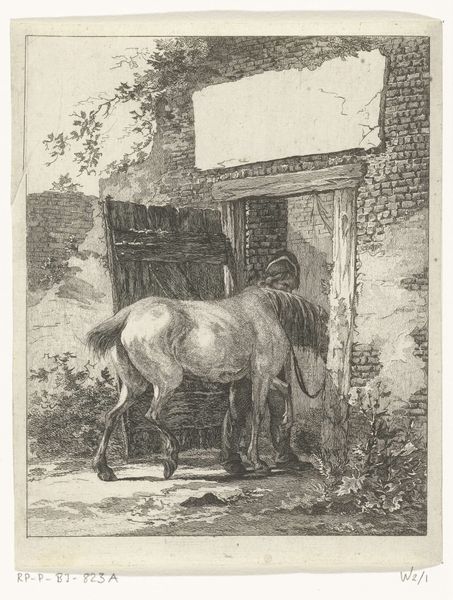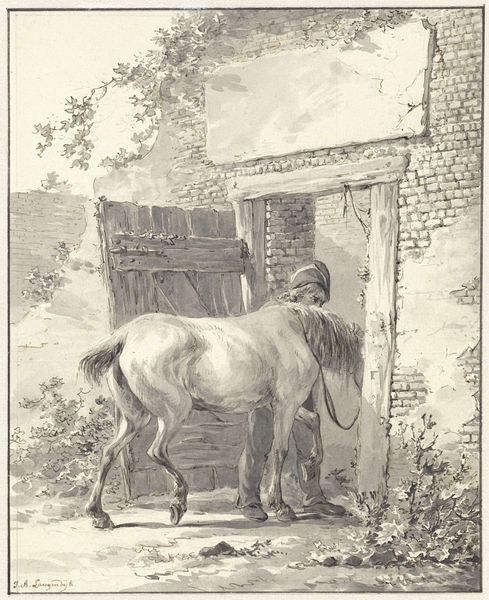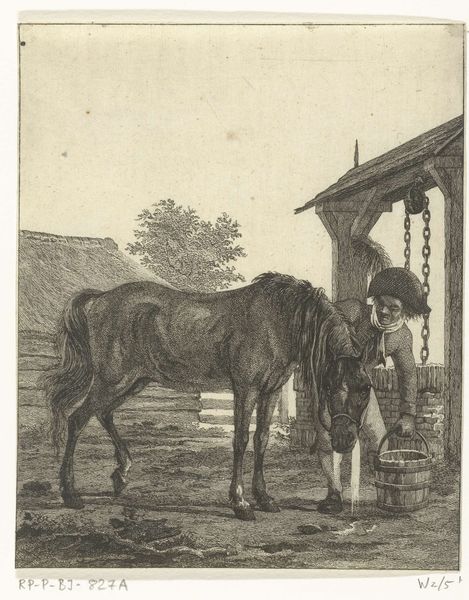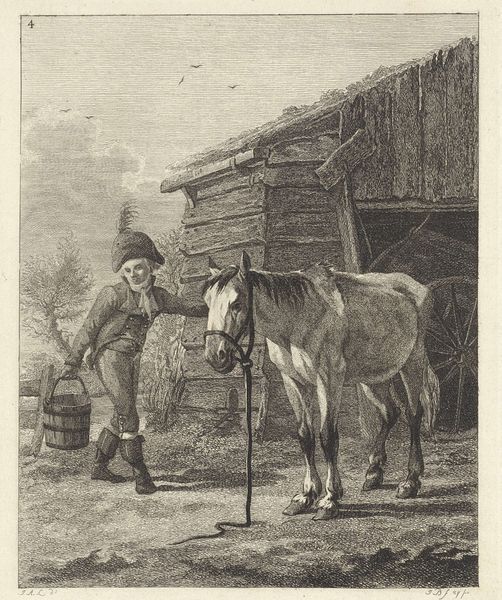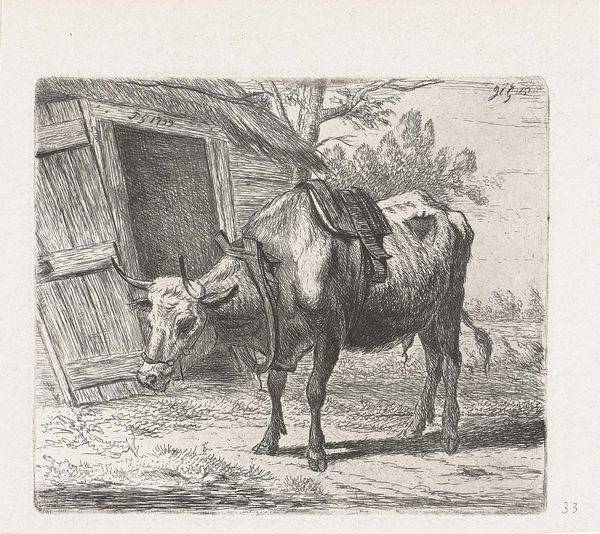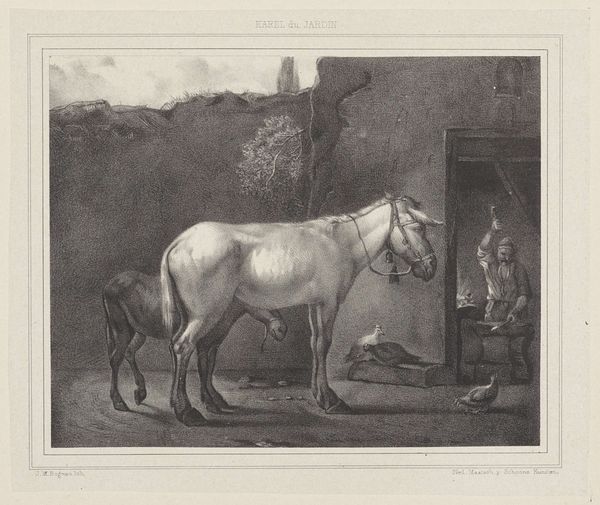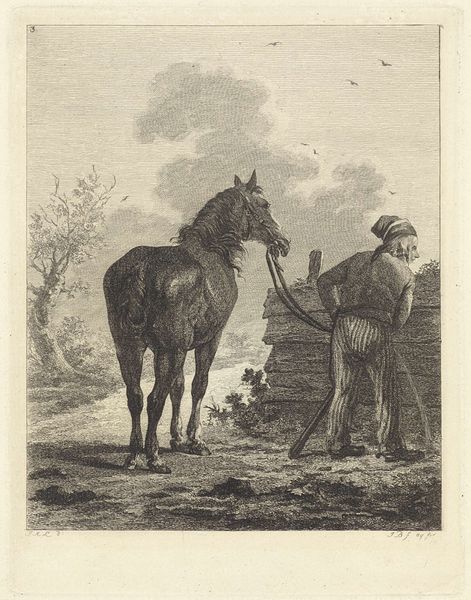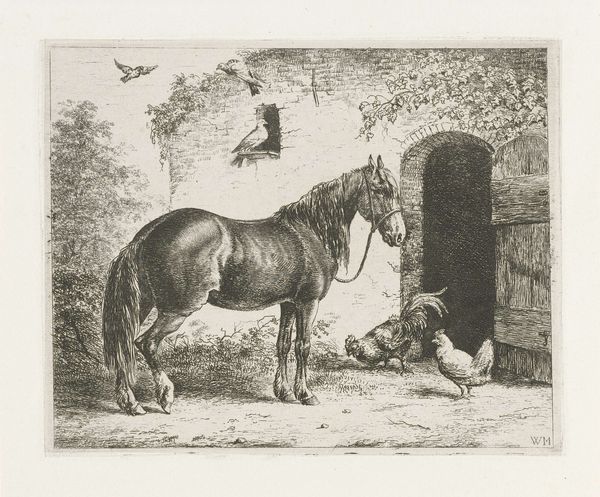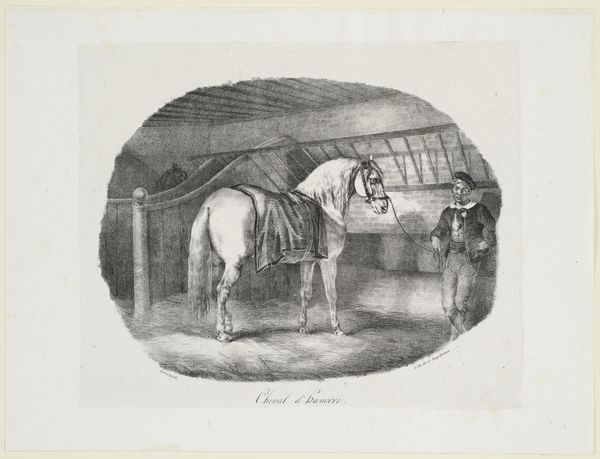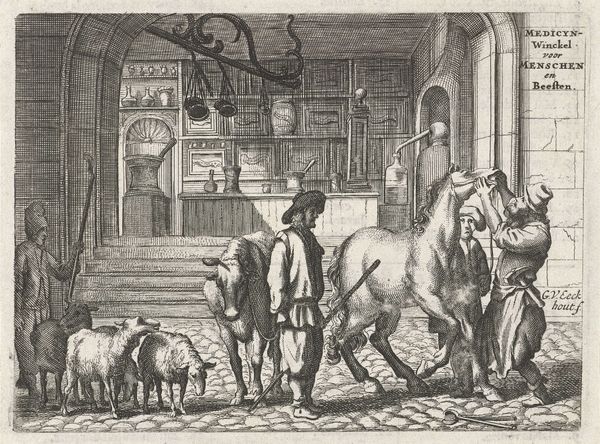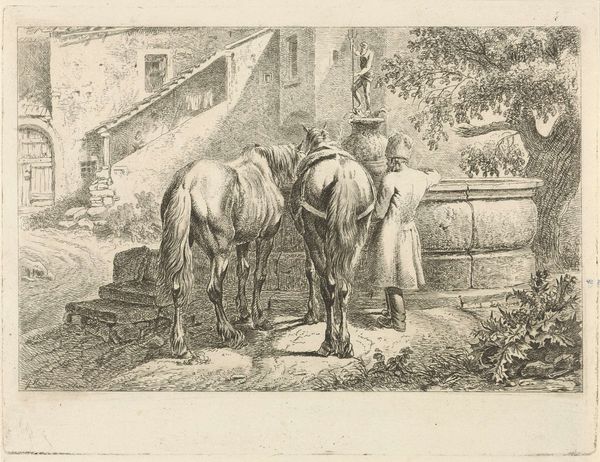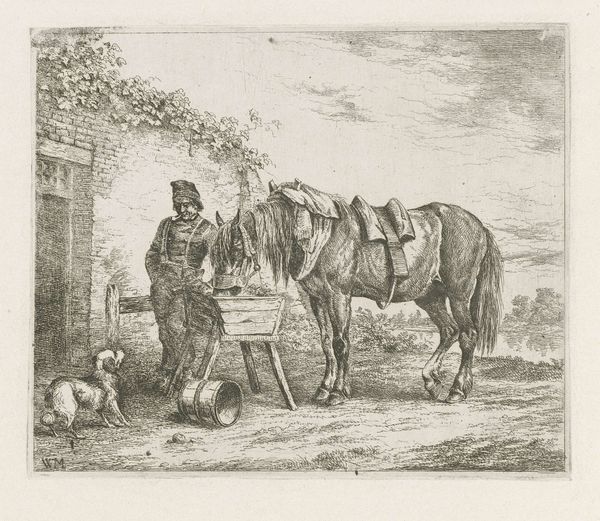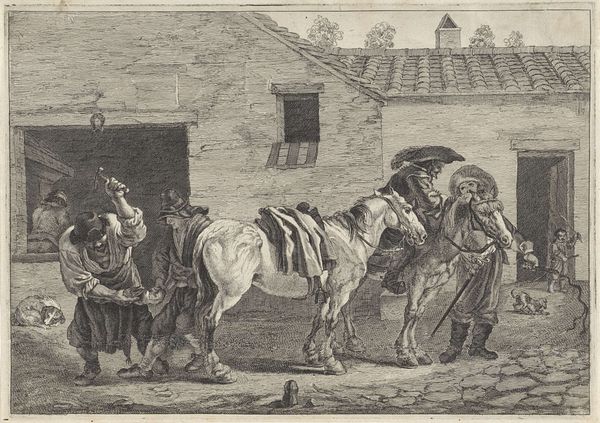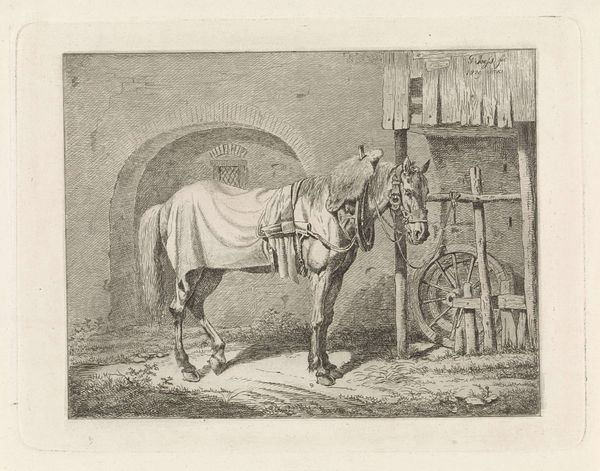
print, etching
# print
#
etching
#
landscape
#
horse
#
genre-painting
#
realism
Dimensions: height 184 mm, width 144 mm
Copyright: Rijks Museum: Open Domain
Curator: Looking at "Titelprent voor serie met paarden" by Joannes Bemme, made in 1802, what captures your eye initially? The work employs etching techniques on paper, doesn’t it? Editor: Absolutely, it does! It strikes me as incredibly intimate. The way the light falls, almost hesitant, and the horse itself seems burdened, or at least very tired. It evokes a certain… domestic melancholy. Curator: I'm intrigued by that. Considering it's an etching, how do you think the materiality informs that emotion? The process of creating the print must have had an impact, since Bemme had to transfer the scene through multiple steps to a copper plate. Editor: The very lines, though fine, possess a sense of permanence, etched into existence by acid; there's a parallel with the repetitive labor that makes this rustic scene possible. Also, it shows how horse labor during that time affected working-class individuals. You also feel the weight of its existence, which then echoes on that animal who gives us a similar burden. Curator: I agree; that’s powerfully put. Now, let’s also consider that, like many prints, this title page served to promote a series. How might this mass-produced item engage social commentary, given its subject? Editor: Given the genre and the time, this isn’t just a picture of a horse; it represents labor inequality and access. The very circulation of images of rural, working-class life could reinforce a cultural status quo but perhaps there are seeds for questioning class disparity that might come forward from the distribution of a picture of this kind. What stories did this image enable or disable? Curator: A delicate balance, certainly. It also makes me consider the artist's labor as a skilled tradesman as well. These are carefully composed images, reflecting a growing market for such scenes among a burgeoning middle class. It showcases a commodification of rural life, filtered through an artistic skill set that relies as much on physical work and craftsmanship as artistic skill. Editor: So true. And as the printing circulated it also entered an evolving economic landscape as artistic production and social critique begin their very long negotiation! Curator: Thank you, those points really opened up the discussion about the context in which Bemme’s technical mastery merges with the political and social messages of the day. Editor: It's been very rewarding to ponder these considerations with you. These pieces always seem to present fresh provocations regarding labor, production, and lived experience.
Comments
No comments
Be the first to comment and join the conversation on the ultimate creative platform.
